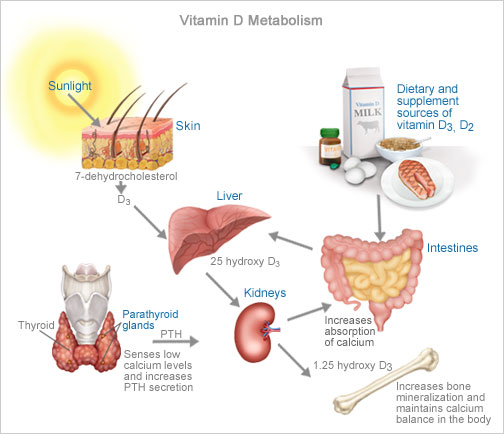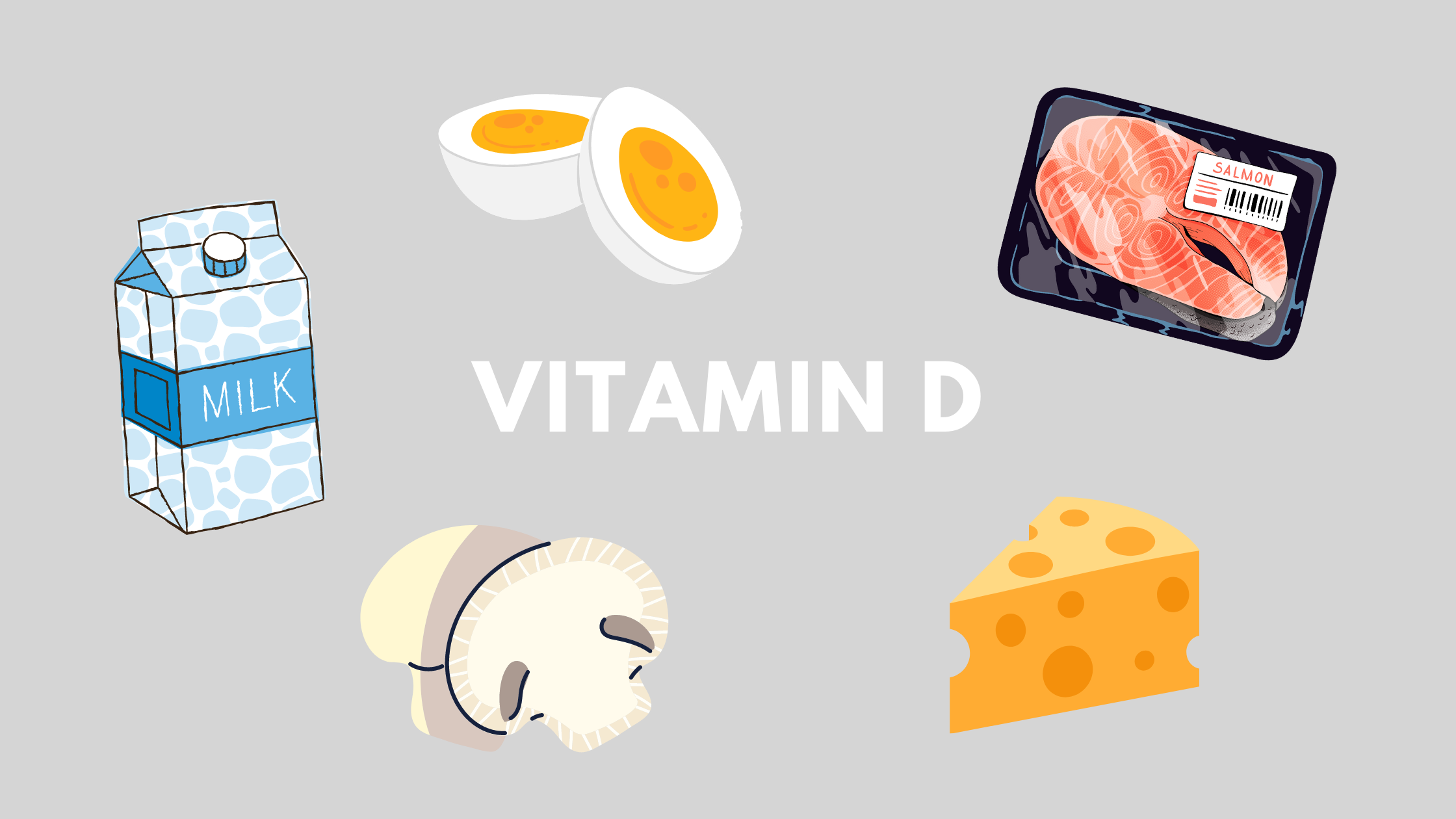
The sun is our all important source of energy. It brings us daylight, powers our solar panels, provides heat, and without it, we would be shivering in the cold and life would die out on earth. Essentially, sunlight is important for the production of Vitamin D in humans. While Vitamin D can be obtained from food consumption, we often do not eat enough to obtain the required levels of Vitamin D. Another note, most of us experience between 50% and 80% of our lifetime sun exposure before age 18 (Learning Vision, 2013). However, the rate at which Vitamin D is produced is affected by skin colour, and darker skin colour takes up to six times longer to produce vitamin D.
Here’s the process:

Picture Credits: Children’s National Medical Centre
Here’s some food that contributes to Vitamin D:

https://onbetterliving.com/vitamin-d-foods/
Adults & Children
Working adults spend most of their times indoor, or perhaps under the shade. We fear the effects of the sun, aging, tan lines, freckles, wrinkles and so on. Some of us like to run in the morning sun, while another group of us avoid it in all and only run in the evening. We cannot deny that sunlight brings us a lot of convenience. We can see better, air our clothes, dry our laundry, grow plants and crops, power up solar panels and so on.
Children on the other hand loves the outdoor. Naturally with a warm sun, and plenty of good weather, children will venture outdoors, where there is more space and room for activities that requires more burst of energy. For children, a sunny day is always a day of fun and adventure. Be it running through parks or going to the playground and enjoying an afternoon with our friends. Soccer, swimming, kite-flying, tag, you name it.

A Compilation of Some Benefits of Sunlight:
- Happy Pill
Serotonin, the body’s natural happy hormone is boosted under sunlight, making us feel happier and more energetic. Sunlight signals daytime and lifting the mood.
- Health Benefits
Vitamin D production from adequate exposure to sunlight is extremely important. It helps our body absorb calcium, keeping our bones healthy, and protecting us against serious chronic diseases later in life such as osteoporosis, IBD, Type II diabetes, multiple sclerosis and many common cancers.
- Relieves Aches & Pains
The warmth from the sun’s rays reduces and eases muscle stiffness, reducing the pain caused by inflammatory conditions such as arthritis.
- Boosts Your Immune System
Sunlight encourages the production of white blood cells, which help to boost your immune system and fight infection. Exposure to sunlight necessary for healthy cell production and proper function of our immune system so have your daily dose of sun!
- Weight Control
Serotonin is not just our body’s natural happy pill. While it keeps us happy, it also suppresses appetite, which prevents us from overeating.
Damage from the Sun’s Rays
Sunlight has it uses, but too much sunlight can be damaging. With advancement in technology and sciences, we are also discovering more about the sun. With global warming, our cloud cover is getting lesser, and there are more UV rays reaching certain areas on our small planet. As a result, there’s been an increase in cases of skin cancer, which is predominantly caused by over exposure by UV radiation, which mutates the human DNA (Mayo Clinic).
Apart from the risk of skin cancer due to overexposure to the sun, heat exhaustion can also results. We may feel sick, feel faint or even develop headaches. This happens due to dehydration and if left untreated, could progress to more severe condition such as heat stroke (Kenny & Tidy, 2011).
How to Avoid Sun Damage?
Well sunscreen for one, is a prevention method. It can block and reduce damage from the sun’s UVA/UVB rays. Always use a sunscreen of above SPF15 if in direct sunlight and remember to reapply every 2hours as sweat can wash off the sunscreen. A diet high in antioxidants would complement in reducing the risk of cancer and other chronic illnesses. Outdoor time should be monitored to avoid overexposure to sunlight. It is recommended that breaks are taken in a shady area and to drink plenty of water, especially when conducting strenuous activities, to avoid dehydration.







